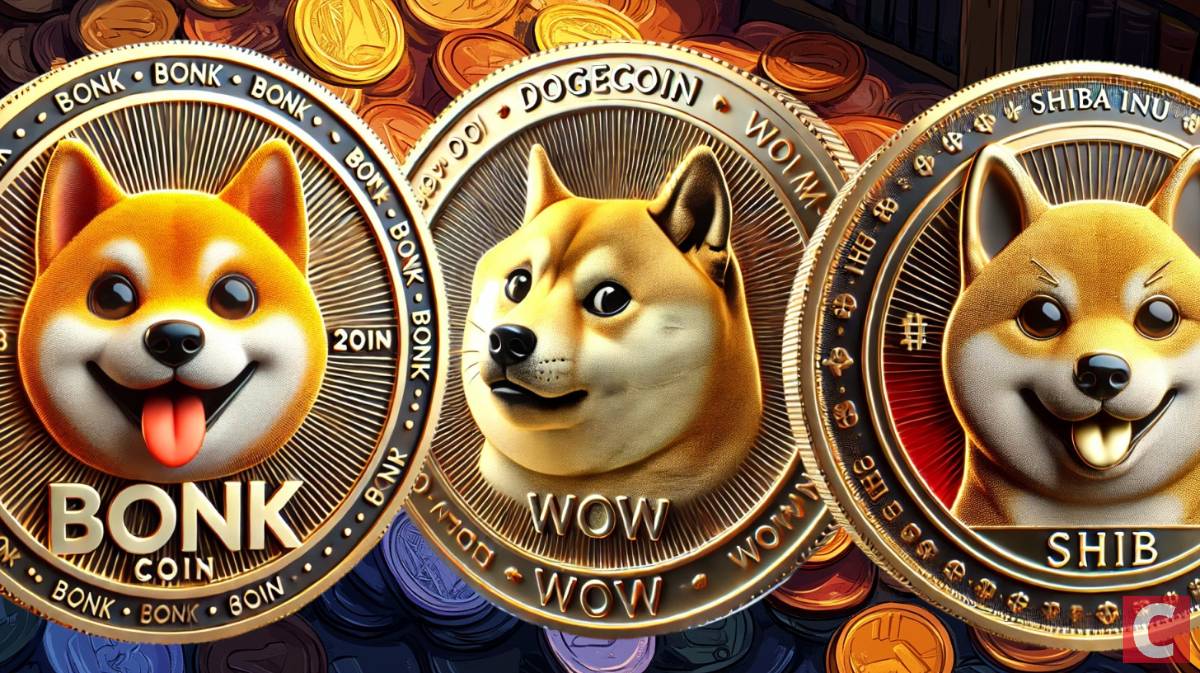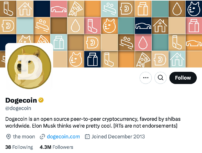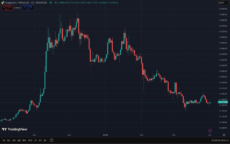In this article, you’ll get a comprehensive look at what XRP is, why it’s gaining renewed attention, and whether it deserves a pla...
Investing in Meme Coins: Risks and Challenges
| Updatedby Tony Frank · 9 mins read

In this article, we dive into the wild world of meme coins—why they attract so much attention, what makes them risky, and the common pitfalls investors face. If you’re considering putting money into tokens like DOGE, SHIB, or PEPE, here’s what you need to know first.
Meme coins are a distinct class of cryptocurrencies from viral humor and online communities. They’ve gained massive attention in recent years—not for their technological innovation but for their ability to capture the mood of the internet and mobilize grassroots movements. While some investors have made outsized returns by catching the right meme at the right time, meme coins remain one of the most unpredictable segments of the crypto market.
This article explores what meme coins are, why they continue gaining traction in 2025, and the risks and challenges every investor should know before diving in.
What Are Meme Coins, and How Do Meme Coins Work?
Meme coins are a category of cryptocurrencies originating from internet meme culture, often inspired by viral jokes, social media trends, or pop culture references. Unlike traditional crypto projects that focus on solving specific technical or financial problems, meme coins are born from humor and online engagement. The most well-known early examples include Dogecoin, created in 2013 as a parody of Bitcoin featuring the Shiba Inu dog from a popular meme, and Shiba Inu, which later positioned itself as the “Dogecoin killer” and gained massive attention during the 2021 bull run.

Dogecoin community has 4.3 million followers on X. Photo: X
What sets meme coins apart from other cryptocurrencies is their community-driven value. These tokens rarely have intrinsic utility at launch, relying on hype, fun, social media virality, and strong grassroots support. Online communities—particularly on platforms like Reddit, Twitter (X), and Telegram—play a key role in building momentum, coordinating campaigns, and sometimes even influencing listings on major exchanges. The strong community often becomes the main driver of price action, leading to extreme volatility and rapid swings based on sentiment rather than fundamentals.

Highly Volatile Nature of Meme Coins. Source: Dogecoin (DOGE) Price Chart by TradingView
While meme coins are often considered speculative, their ability to mobilize large online audiences has made them a unique force in the crypto space, blurring the line between internet culture, finance, and entertainment.
Why Meme Coins Attract Attention in 2025
In 2025, meme coins continue occupying a unique corner of the crypto market—not because of their technical sophistication but due to their deep connection with online culture and behavior.
Meme coins generally stand apart from traditional cryptocurrencies because they are rooted in internet memes, popular culture, and the social web. Unlike Bitcoin, which was built around a revolutionary financial philosophy, meme coins were created—often with humor in mind—to poke fun at the seriousness of the crypto world. Yet, ironically, this self-awareness and irreverence have helped them gain massive popularity.
What started as a joke has become a serious force in the cryptocurrency market, with meme coins now commanding billions in market cap and trading volume. Crypto investors, especially those looking for high-risk, high-reward assets, increasingly treat meme coin investments as speculative plays for potential gains, even if many of these coins lack innovative features or deep technical roadmaps.
Viral Momentum and Social Media Trends
Meme coins thrive on viral trends and social media attention. In 2025, platforms like X (formerly Twitter), TikTok, and Reddit will remain at the center of crypto culture, with meme coins leading engagement. One post from a major account can ignite a buying frenzy, driving thousands of trading transactions within minutes.
The Dogecoin community, for example, has shown how a dedicated community and a few well-timed tweets—especially from figures like Tesla CEO Elon Musk—can cause significant gains overnight. Celebrity endorsements remain a powerful, unpredictable catalyst for meme coin price movements. These effects are amplified by algorithms that reward engagement, forming viral loops where visibility feeds volume and vice versa.
Pop Culture Appeal and Internet Identity
Meme coins are not just digital assets, they are identity markers. In 2025, especially among Gen Z and younger Millennials, owning a prominent meme coin like Dogecoin, Shiba Inu, or a trending newcomer is a form of cultural participation. These coins represent digital belonging and offer a way to align with online tribes, humor, and rebellion.
Tokens tied to memes, famous pets, TV characters, or internet phrases tap into a collective nostalgia and irony that traditional cryptocurrencies lack. The Shiba Inu’s developers, for example, built an entire ecosystem not just around a coin, but a shared digital universe. That emotional resonance makes meme coins sticky, even in bear markets.
Low Entry Cost and Perceived Opportunity
One of the main reasons many traders are drawn to meme coins is their affordability. With a low average unit price and massive total supply, meme coins give an illusion of value—letting users buy millions of tokens for just a few dollars. This psychological effect fuels FOMO and gives retail investors the sense that they’re getting in early on “the next big thing.”
Stories of early Dogecoin investors turning pocket change into fortunes—sometimes amplified by media outlets like The Motley Fool—inspire speculative bets. In this context, meme coin investments are treated as high-stakes lottery tickets with a shot at life-changing returns, even if the odds are slim.
Community Power and Engagement
A vibrant, dedicated community is at the core of every meme coin success story. In contrast to top-down projects with institutional backing, meme coins grow organically—from Discord servers, meme contests, and viral campaigns. These communities don’t just support the token; they become its marketing team, meme factory, and sometimes even its development group.
This was true for Dogecoin, thanks to co-creator Jackson Palmer and a user base that turned a joke into a billion-dollar asset. In 2025, that model still works—meme coins with a large following often outperform more technically advanced coins simply because of grassroots loyalty.
Because of their speculative nature, meme coins provide a powerful case study in attention economics. But with publicity comes risk, and crypto investors must make informed decisions, balancing culture-driven enthusiasm with clear-eyed analysis of the volatility and fragility that define this segment of blockchain technology.
Key Risks of Investing in Meme Coins
While meme coins offer high upside potential and viral appeal, they also carry considerable risk. The publicity draws many retail investors in, only to face harsh realities once momentum fades. Understanding the inherent risks is essential for anyone considering meme coin exposure.
High Volatility and Market Instability
Meme coins are among the most volatile assets in the crypto market. Their prices often surge or crash based on nothing more than a viral tweet, a trending hashtag, or speculative hype. Unlike fundamentally driven assets, meme coins lack price stability, making applying conventional analysis or predicting short-term movements difficult. What goes up in hours can easily collapse—wiping out gains and capital.
Lack of Fundamental Value
Most meme coins are not backed by real utility, underlying revenue, or a functioning product. Their value is largely based on sentiment, not fundamentals. Long-term sustainability is questionable, especially when interest wanes or the community loses momentum. Without a core use case or economic framework, meme coins often struggle to retain relevance once the initial excitement passes.
Scams, Rug Pulls, and Manipulation
The meme coin space is notoriously vulnerable to scams and malicious actors. Because these tokens can be launched with minimal effort and no oversight, bad actors frequently exploit hype cycles to orchestrate rug pulls—where developers drain liquidity and disappear, leaving investors with worthless tokens. In other cases, whales or coordinated groups manipulate price action through pump-and-dump schemes, profiting at the expense of retail buyers. With limited regulation and fast-moving markets, due diligence is critical.
How to Minimize Risk When Investing in Meme Coins
Meme coins can deliver impressive gains—but also painful losses. Navigating this high-risk space requires a thoughtful approach, combining research, risk management, and security awareness. Here are key strategies to help reduce your exposure to the most common pitfalls.
Conducting Research
Before investing in any meme coin, understand the basics: Who created it? What is the community like? Is there any roadmap or utility being developed? Review social channels (X/Twitter, Telegram, Discord) for signs of organic engagement versus manufactured hype. Look into on-chain data like liquidity, holder distribution, and developer activity. Even though meme coins often lack strong fundamentals, some research can help you avoid obvious red flags.
Managing Exposure
Because meme coins are inherently speculative assets, limiting your allocation is wise. Avoid overcommitting capital and treat meme coins as a small part of a diversified portfolio. Many investors apply a “lottery ticket” approach—risking only what they can afford to lose. Using stop-losses (where supported) and taking profits during major price surges can also protect you from sudden reversals.
Using Secure Tools and Platforms
Security is just as important as strategy. Always use reputable wallets, trusted exchanges, and verified smart contracts when buying meme coins. Avoid connecting your wallet to unknown dApps or clicking on links shared in unofficial groups. If using decentralized exchanges, verify token contracts manually to avoid fake or cloned versions of popular meme coins. Simple precautions can save you from phishing attacks, rug pulls, or exploitative contracts.
Conclusion
Meme coins are more than just jokes on the blockchain—they represent a new wave of digital currencies shaped by viral moments and mass participation. While many meme coins start as lighthearted experiments, they quickly evolve into assets capable of delivering massive gains and devastating losses. In 2025, their momentum is fueled by meme virality, celebrity endorsements, and the collective energy of community members who treat these tokens as cultural movements as much as financial instruments.
What sets meme coins apart is not technology but narrative. A single tweet from a well-known figure can send a token skyrocketing, and coordinated efforts by tight-knit communities can push listings onto major exchanges. But while this grassroots enthusiasm creates short-term buzz, it also introduces long-term risk. Many meme coins lack utility, governance, or economic models to support sustained growth.
For those exploring this volatile cryptocurrency market niche, meme coins demand more than optimism—they require skepticism, strategic thinking, and a strong understanding of the social dynamics behind price action. Investors must approach them as speculative digital assets, not long-term stores of value, and be prepared for sudden shifts in sentiment.
In short, meme coins may be digital currencies, but they behave more like cultural lightning in a bottle. And in this unpredictable space, only well-informed, risk-aware participants can hope to navigate the chaos and emerge ahead.
Disclaimer: This article is for informational purposes only and does not constitute financial advice. Meme coins are highly speculative and subject to extreme price volatility. Investors should conduct their own due diligence and understand that the value of meme coins can fluctuate rapidly, often based on sentiment and online trends rather than intrinsic value. Never invest more than you can afford to lose.
FAQ
What are meme coins, and how do they work?
Meme coins are cryptocurrencies inspired by internet jokes, memes, or pop culture. They usually rely on community promotion and online social networks momentum rather than technical utility.
Are meme coins a good alternative investment in 2025?
They can offer high returns, but they’re extremely volatile and speculative. You should approach them with caution and proper risk mitigation before investing.
How do I avoid scams and rug pulls in meme coins?
Do thorough research, verify smart contracts, avoid unverified links, and check liquidity and developer activity before investing.
Which are the most popular meme coins right now?
As of 2025, top meme coins include Dogecoin (DOGE), Shiba Inu (SHIB), and newer trending tokens like PEPE and FLOKI.
Can I make money buying meme coins?
Yes, but gains often depend on timing and luck. Most meme coins rise sharply and fall quickly, so profits are far from guaranteed.
What makes meme coins different from other cryptocurrencies?
Unlike utility or governance tokens, meme coins are driven by humor and community engagement rather than real-world use cases.
How do social media and celebrity tweets affect well-known meme coin prices?
They can cause massive price swings almost instantly. A viral tweet or post can trigger a spike or crash in meme coin value.
How do I reduce risk when investing in highly volatile meme coins?
Only invest what you can afford to lose, set profit/loss targets, diversify, and use trusted platforms and wallets.
We’ve found eight decentralized wallets that stand above the rest. Keep reading to find the best decentralized crypto wallet to us...
This guide is a must-read when exploring the best new crypto in 2025. We reveal the most promising launches to watch.